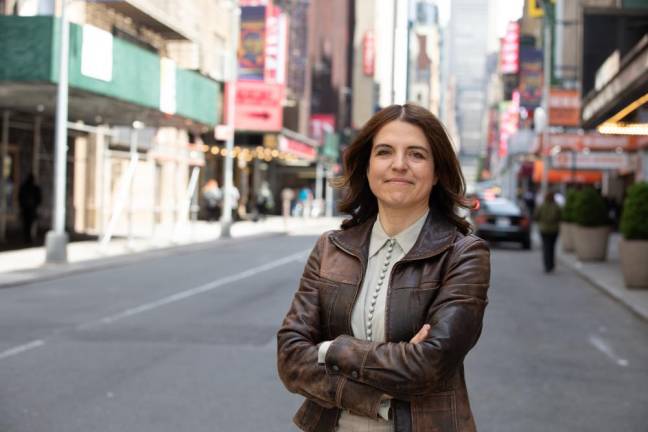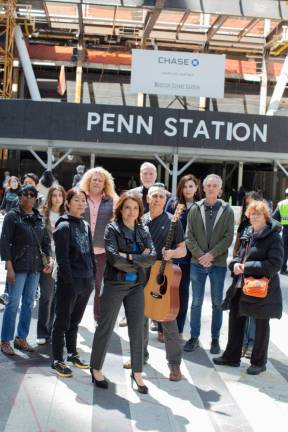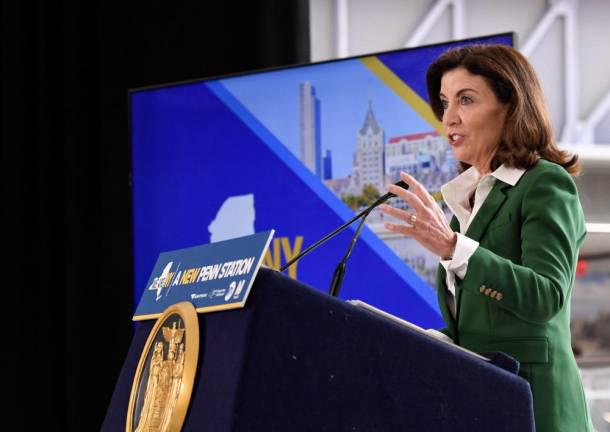Starting Over on Penn Station
In a rebuke to Hochul, CB5 votes to draft their own redevelopment proposal



Dissatisfied with current plans for redeveloping the Penn Station neighborhood, the local community board voted Thursday to draw up an alternative plan through an extensive process of consulting neighborhood groups as well as major private interests like the owners of Madison Square Garden and the realty company that wants to build a set of huge, new office towers.
“CB5 believes that although this area is of critical importance for the region and for the nation, the local community is best suited to spearhead and design a plan to address the multiple needs, and work with all stakeholders,” the board said in its resolution. “CB5 will undertake the effort to create a resilient, ambitious, pragmatic and comprehensive plan to address the transportation, infrastructure, zoning, socioeconomic, fiscal and urban design needs of an area that has proven vexingly difficult to fix.”
The vote was a rebuke to Governor Kathy Hochul’s plan to give private developers, lead by the largest local property holder, Vornado Realty Trust, permission to build ten new office towers around Penn Station and siphon revenue from the deal to help pay for the renovation of Penn Station.
“CB5 believes that it is government’s responsibility to build and fund infrastructure and plan for our district’s zoning and land use needs, with public interest at heart,” the board said.
Future of MSG
More generally, the board made clear that the governor’s plan did not address several important issues, most notably the question of the future of Madison Square Garden, which has sat atop Penn Station since the original was torn down in the 1960s.
In its resolution, the board highlighted the history of the Garden, which was given special permission to build above the railroad when the original Penn Station was demolished. When that permission expired nine years ago, the board noted, the city extended permission for ten years on condition the Garden then move.
Proponents of a better Penn Station say their options remain cramped so long as the Garden is where it is. At the time of the extension, then Governor Elliot Spitzer and the Garden’s owner, James Dolan, made a deal to move the Garden across the street to a portion of the Farley Post Office. But the deal fell through after Spitzer was driven from office in a prostitution scandal.
Eager to get the renovation of Penn station underway, Hochul declined to tie the improvement of Penn Station to moving the Garden. But now the timelines are coinciding anyway, as the ten year extension for the Garden’s permit expires in July of 2023.
Layla Law-Gisiko, chair of CB5’s land use, housing and zoning committee, said the future of the Garden was only one of a number of issues left unresolved in the governor’s plan. Another, she noted, was the future of Macy’s, which wants permission to expand.
She said that was worth considering if the original building was protected, sightlines to the Empire State Building were preserved and Macy’s contributed to improving subway access and public amenities.
“We are basically flipping the process and we are saying ‘ok you guys were not able to deal with our issues in a comprehensive fashion’,” Law-Gisiko said of the governor’s plan. “So, ok, fine we are going to go to work and look at all these issues and create a plan.”
Working Group
Law-Gisiko said the board was operating in the spirit of a section of the city charter that gives community boards authority to draft their own neighborhood renewal plans. Community Board 9 in Upper Manhattan used this provision with some success to influence Columbia University’s plans for new construction in Harlem, for example.
CB5 plans to create a working group “made up of members of the community board, community stakeholders, civic organizations and others who have great minds, great skills and great expertise and can work with us to help us come up with the best possible plans,” Law-Gisiko said.
The group will hold public meetings to “hear what people have to say” and consult both planning experts and private sector stakeholders, including Madison Square Garden, Macy’s and Vornado, said Law-Gisiko, who ran unsuccessfully for the Democratic nomination to the state assembly in the neighborhood earlier this year.
“We want everybody at the table,” she said. “We understand that the private stakeholders are very, very important. We don’t mean to impose something on them. we need to have buy in on all sides. We believe that it is doable. Not everybody is going to get what they want. But working with people and with elected officials, private stakeholders is key in making sure the community is heard and the community plan is going to be successful.”
The state’s Empire State Development Corporation, which is managing the plan for the Penn Station area, did not respond by press time to a request for comment on the Community Board’s action.
“The Goal is Not to Linger”
Law-Gisiko said the board was intentionally not creating a precise timeline but that they expected the work to be counted in months, although “maybe more than twelve.”
“The goal is not to linger,” she said.
The board’s goal is not to block all development.
“We do believe that doing up zonings and massing density around transit hubs is very sensible. The reality is that there is tons of undeveloped density under the current zoning. The zoning is actually pretty generous as it is today. The area is underdeveloped.”
She noted that both Madison Square Garden and the Farley post office have unused air rights that could be used to support development in the area.
Hochul’s plan would give Vornado and other developers the right to build towers substantially larger than present zoning.
Law-Gisiko said there were four fundamental questions the planning process would work to answer:
*How, and where, should existing but unused building rights be assembled, and should there be a bonus structure to allow for even larger buildings?
*How should Penn Station be made “functional” for present users and rebuilt in a way that will absorb likely growth in the future?
*What parks, pedestrian spaces and other public realm features need to be part of the redevelopment, including improved mass transit access?
*How will the urban design of this redevelopment preserve historic buildings, like Macy’s and the Gimbel’s Skyway, as well as views of the Empire state building?
“Lets figure out how this neighborhood would look if you put all of that in place,” Law-Gisiko said. “Currently there is none of that in place.”
“CB5 believes that it is government’s responsibility to build and fund infrastructure and plan for our district’s zoning and land use needs, with public interest at heart.” From the CB5 resolution